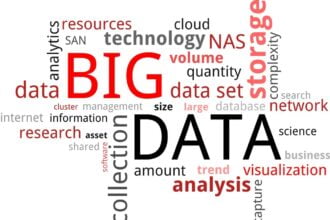The BI market place is flooded with messaging from vendors saying they can provide analytical platforms and access to information faster, better, easier, and cheaper. This is true in many ways due to the shifts in technology:
- storage is more cost effective
- processing speeds are quicker
- operational intelligence and access to information in near real-time is available more broadly
- self-service models make it easy for many different types of users to interact with solutions
- time to value is occurring more quickly due to quicker implementation times on a broad level
But even with all of these shifts and advancements in technology, many organizations are still left out in the cold because of the fact that it is difficult to sift through all of the solutions available to decipher where real value will lie. After all, many of the solutions available in the market place will meet the needs of many organizations depending on what the intended goal is. Identifying real value, however is something different to different businesses that depends largely on scope, goals, and expectations.
When looking at the time to value specifically, the following should be noted:
- Realistic expectations should be set related to initial implementation times. These will differ based on new implementation or upgrade, technology used, complexity of data, and development of business rules and delivery platform.
- Many factors require consideration when implementing a solution that may affect timelines.
- Some solutions will require an iterative approach, meaning that value will increase over time. Businesses need to identify what is realistic and what they can accept.
- The level of value will differ based on the targeted audience.
- The meaning of time to value and value itself needs to be identified as it will differ based on stakeholder. For instance, does time to value translate to implementation times? Or does it rely on goals set to save costs or increase profits?
The reality is that there is no single definition identifying what “time to value” means within the market. What this translates to for companies evaluating solutions is that much of what they hear will relate to implementation times and not how that translates in terms of time to the iterations required to get BI right and provide a framework for overall value. The value being actual results, whether they be the ability to lessen wasteful spending by targeting customer needs better, lowering customer churn rates, identifying issues before they become problems, or increasing profit margins. Therefore, it stands to reason that organizations require the education and tools to develop their own expectations surrounding time to value. It will always be possible for vendors to estimate the implementation of various solution components, but they will not be able to identify how BI will be applied, what business questions will be asked over time, or how decision makers will leverage their information assets to improve overall efficiencies. This remains the realm of BI stakeholders and those in charge of asking the right questions and delving deeper into the information at hand.
For many organizations, the goal is simply to get a dashboard or set of analytics up and running, thinking that the value they achieve will come naturally. The truth is a bit different. A solution can only go so far without getting into the hands of the right people. The right people asking quantifiable questions to get to the heart of business challenges are what leads to true time to value. After all, technology is meant to support our business operations and not make the decisions for us.
This post was written as part of the IBM for Midsize Business program, which provides midsize businesses with the tools, expertise and solutions they need to become engines of a smarter planet. I’ve been compensated to contribute to this program, but the opinions expressed in this post are my own and don’t necessarily represent IBM’s positions, strategies or opinions.`









